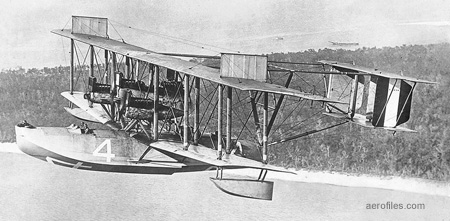
The First Successful Transatlantic Flight By the US Navy's NC-4 Flying Boat By John R Bayer
Several million people fly the Atlantic each year. Every plane that crosses does so under a system of radio communications, weather forecasting, satellite navigation, and rescue forces that is the inheritance of the first transatlantic flight, by the US Navy's NC flying boats. Today, the story of the NC Transatlantic Flight Expedition and its crews has sadly been all but lost in the dust of history. In 1919, the Navy's NC-4 and a crew of six made the first successful transatlantic flight. It took some three weeks, May 8-27, to accomplish that. Humans had only taken wing in airplanes less than 20 years before, and Lindbergh's Paris flight was still eight years away.
On May 8, 1919, NC-1, -3, and -4 took off from Naval Air Station Rockaway in Long Island, New York, with Trepassey, Newfoundland, the intermediate stop prior to their attempt at the Atlantic. After delays from NC-4's engine trouble near Cape Cod and bad weather at Trepassey, all three aircraft finally departed on the long flight across on Friday evening, May 16. In contrast to te present, these aircraft flew at 90 mph maximum, with the crews exposed to the elements in open, unheated cockpits. A scheduled stop for fuel in the Azores required more than 17 hours to reach—elapsed flying time for the entire crossing would add up to more than 26 hours!  NC-4 on an old postcard Today, one sees at St. John's, Newfoundland, a plaque commemorating Alcock and Brown for the second successful Atlantic flight, and there are monuments to that epic in Ireland and at Heathrow Airport near London. While the British saw fit to dedicate a plaque to the NC-4 at Plymouth marking the actual end of its flight, and the Portuguese featured a similar tribute at Lisbon, it took until the flight's 50th anniversary in 1969 for our country to place a marker at Rockaway, where it all began, and that was solely due to citizens of the community. Neither the American aircraft industry, or what's left of it, nor the airlines that dominate the North Atlantic have ever felt a need to establish even the most basic memorial to the NC Transatlantic Expedition at New York City's Kennedy International Airport. Yet every flight that takes off from its runway 25L is barely airborne when it overflies the site of that long-gone NAS Rockaway. In the summer of 1919, American composer Frederick Bigelow was so moved as to write a song, "The NC-4 March." Each year at 4th of July celebrations and on town greens, this tune can still be heard from brass bands, but very few know the cryptic significance of its title. NC-4 was restored by the Smithsonian's National Air and Space Museum and the US Navy for its 50th anniversary, and another six years before being placed on permanent display at the National Museum of Naval Aviation in Pensacola, Florida. NC-4 finally had a place of honor. The plane would not have survived at all had it not been for the efforts of the late Dr Paul E Garber, former curator of NASM, who shepherded NC-4's remains from the 1940s until it was restored.
The flight of NC-4, its lessons and its blazing of the Atlantic airways, are largely unknown today. Many Americans think Lindbergh made the first crossing; Englishmen applaud Alcock and Brown. At the time, some thought it not "sporting" that the Navy placed ships along the route to aid navigation, and that the flight took so long to accomplish. Still the NC-4 was, and ever shall remain... First Across the Atlantic!
The original flight of three aircraft was conceived, planned, and led by Cdr John H Towers, USN. None of this would have occurred without his forethought and vision.
My deep gratitude is to Dr Richard K Smith, whose ideas and research were excerpted here. He is author of First Across!, the authoritative account in 1973 of the flight, republished in 1986 by Naval Institute Press. I read the book as a teenager; it inspired me to be a part of Naval Aviation, and is the reason I am working to celebrate the flight and honor those men for their achievement. (J R B) |